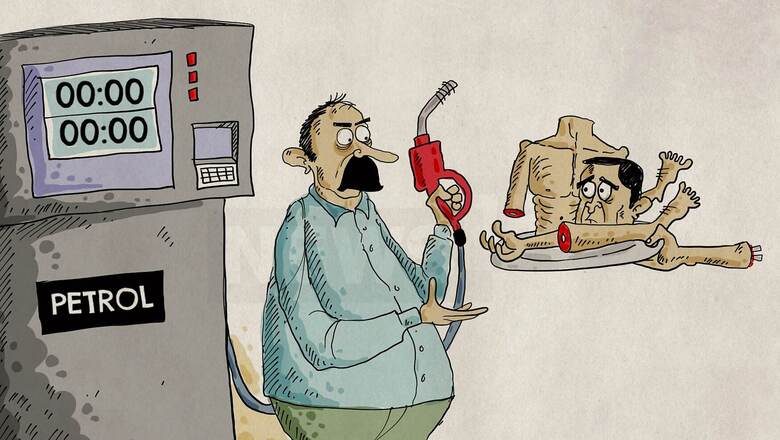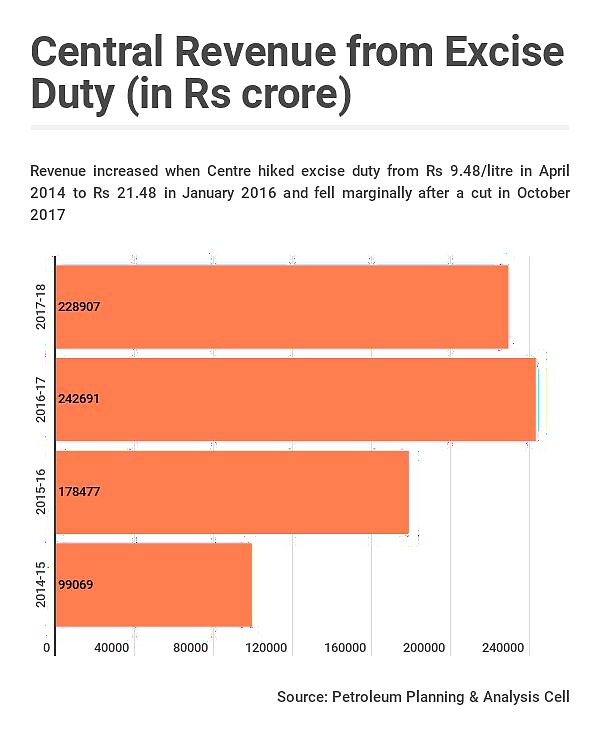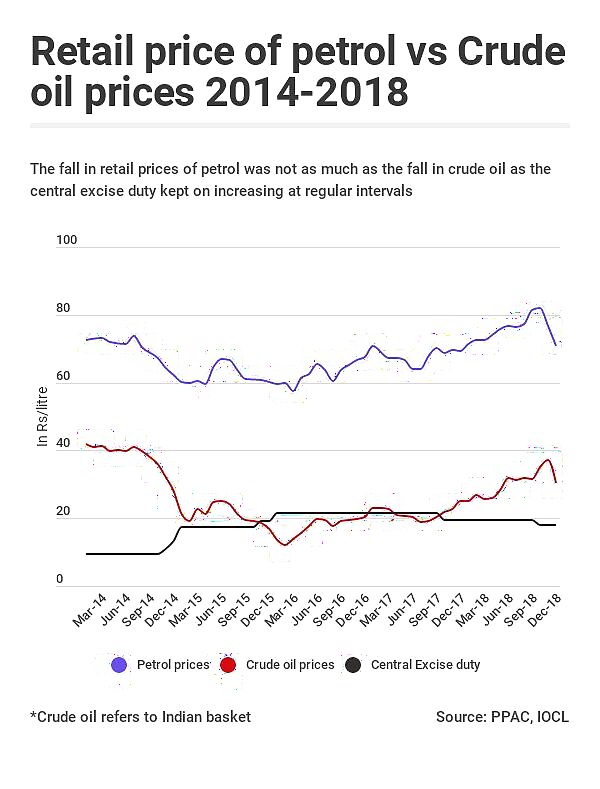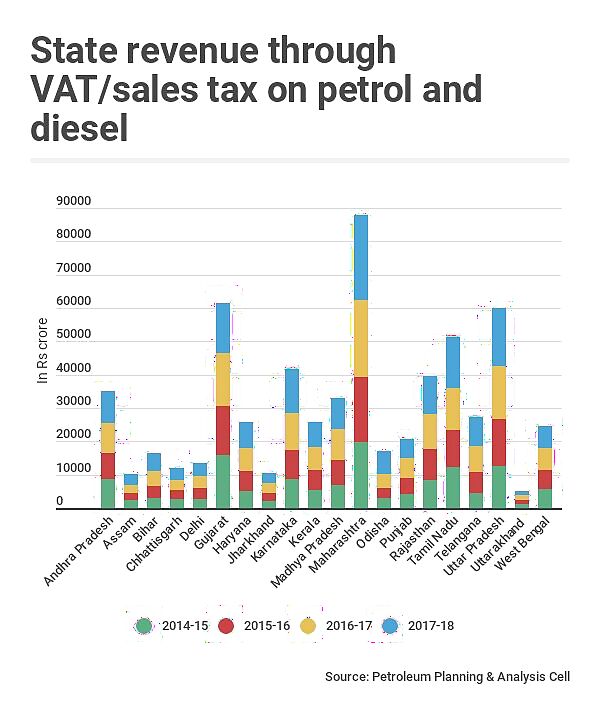
views
New Delhi: Petrol prices this year breached the Rs 80-mark for the first time, touching an all-time high of Rs 84 per litre on October 4 in the national capital. In Mumbai, too, petrol was sold at a lifetime high of Rs 91.34 the same day, crossing the Rs 90-mark for the very first time. Similarly, diesel prices in Delhi, Kolkata, Mumbai and Chennai saw unprecedented highs of Rs 75.69, Rs 77.54, Rs 80.1 and Rs 80.04 per litre, respectively.
The government at the Centre attributed the increase to a rise in crude oil prices in the international market and a weakening rupee against the US dollar. While crude did soar this year, an analysis by News18.com of the average fuel prices in the country with average crude prices reveals that rates of petrol and diesel had remained lower in previous years even when crude oil was being sold at a much higher price.
Consider this: the average rate for petrol in 2018 remained Rs 75.51 and Rs 82.91 per litre for Delhi and Mumbai (as on December 25), respectively. At the same time, crude oil prices averaged at $70.62 per barrel (Indian basket) in the international market. In contrast, petrol had averaged at Rs 69.53 in Delhi and Rs 76.6 per litre in Mumbai in 2013 even as crude oil costs were at $106.49 per barrel on an average.
Falling crude prices did not reflect in retail prices
In final last three years of UPA-II, crude oil prices skyrocketed to touch an all-time high of $123.61 in March 2012. Rates in the Indian basket averaged at $108.03, $109.95 and $106.49 per barrel in 2011, 2012 and 2013, respectively. However, the prices began to decline as soon as production increased globally.
The prices further plummeted after the Narendra Modi-led NDA government assumed power in May 2014, going as low as $28.07 per barrel on an average in January 2016. They remained below $70 per barrel for almost a year and a half between December 2016 and May 2018.
But for the common consumers, costs of petrol and diesel remained almost the same as the government increased taxes when crude prices fell. The Centre increased the excise duty on petrol and diesel on several occasions. And when crude prices eventually began the upward move since late last year, the burden kept on increasing on the common man.

According to data shared by the government in Parliament, the central excise duty was Rs 9.48 per litre on unbranded petrol and Rs 3.56 on unbranded diesel as on April 1, 2014. After that, beginning November 12, 2014, the central government hiked the duty a number of times to raise it to Rs 21.48 on petrol (126 percent hike) and Rs 17.33 on diesel (386 percent hike) by January 31, 2016. With this, the Centre’s revenue increased multi-fold between 2014 and 2018, which the government said helped increase public spending.
But the Centre is not solely responsible for the expensive fuel. State governments also levy a VAT or sales tax on petrol and diesel. This tax is levied by the state government after the central taxes, making it a tax-on-tax system. Since April 2014, several state governments either increased their VATs or kept them unchanged when crude prices in the international market were falling. State VATs, too, in addition to central excise duty, make for a huge chunk of fuel rates.

States like Andhra Pradesh, Karnataka, Kerala, Madhya Pradesh, Maharashtra, Punjab, Rajasthan, Sikkim, Tamil Nadu, Telangana, Uttarakhand and Uttar Pradesh levy a VAT of 30-40 percent as of March, 2017.

Protests and Relief
With crude oil prices beginning to rise towards the end of 2017, the central government, in October 2017, had revised the excise duties on petrol and diesel by Rs 2 per litre to Rs 19.48 and Rs 15.33 per litre. This year, too, as pressure mounted from the opposition, the government cut the excise duty on petrol and diesel by Rs 1.5 per litre and asked the state-run oil marketing companies to take a hit of Rs 1 per litre, making the effective price cut to be Rs 2.5 per litre. At present, the excise duty on per litre of petrol is Rs 17.98 and Rs 13.83 per litre on diesel.
The composition of Indian Basket of Crude represents average of Oman & Dubai for sour grades and Brent (Dated) for sweet grade in the ratio of crude processed.
Sources: Petroleum Planning & Analysis Cell, IOCL, Rajya Sabha questions.




















Comments
0 comment